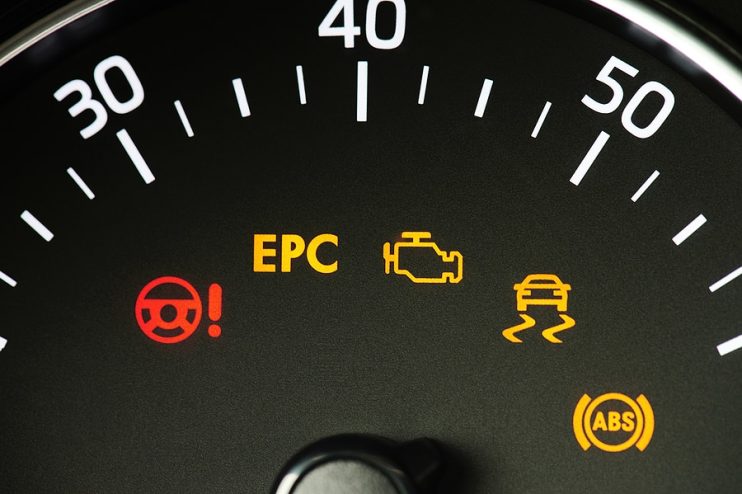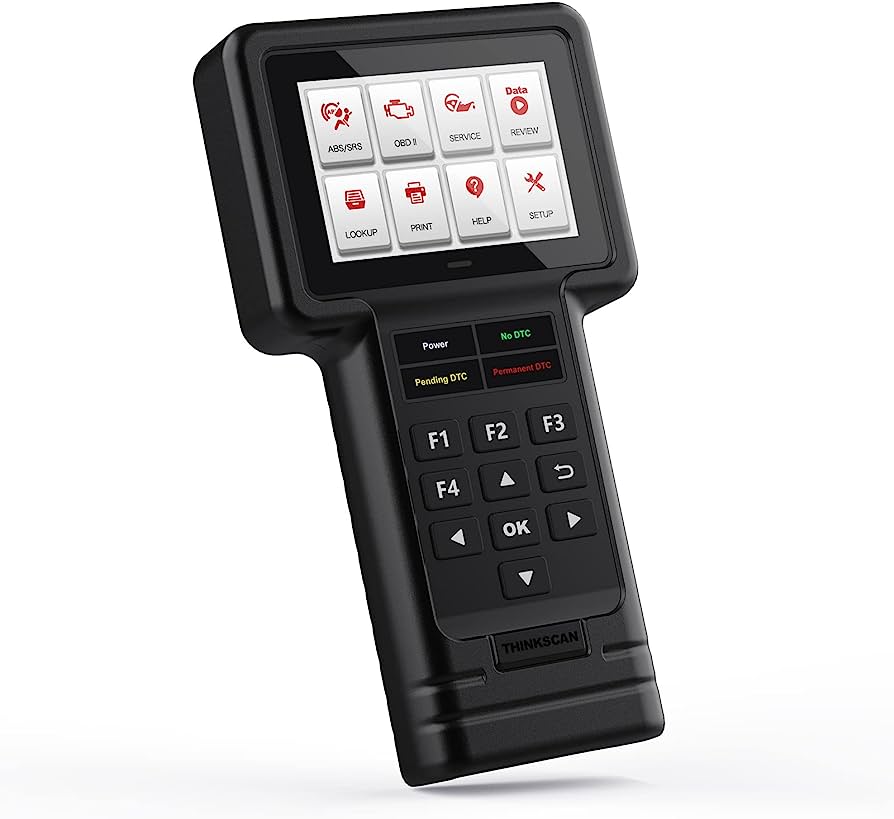To disable limp mode on a BMW, you can use a diagnostic tool to reset the electronic control unit (ECU) and clear any error codes. Having your BMW go into limp mode can be frustrating, as it significantly limits the performance and speed of your vehicle.
Limp mode is a safety feature that is triggered when the ECU detects a potential issue with the engine or transmission. While it is important to address the underlying problem causing the vehicle to go into limp mode, you may want to disable it temporarily to restore normal driving capabilities.
We will explore the steps you can take to disable limp mode on your BMW and regain control over your car’s performance. By following these simple instructions, you can reset the ECU and clear any error codes, allowing your BMW to operate smoothly once again.

Credit: www.breakerlink.com
Understanding Limp Mode On Bmw
Limp Mode, also known as the “Safe Mode” or “Fail-Safe Mode,” is a feature in BMW vehicles that is designed to protect the engine and transmission systems from potential damage. When triggered, Limp Mode restricts the vehicle’s performance to a bare minimum, allowing you to safely drive to a service center for further inspection and repairs.
What is Limp Mode in BMW?
Limp Mode is a safety mechanism that activates when the BMW’s engine control module (ECM) detects a critical issue with various components, such as the engine, transmission, or other critical systems. It is designed to limit the vehicle’s speed, power output, and operating parameters to prevent any further damage.
Causes of Limp Mode in BMW
There are several potential causes that can trigger Limp Mode in your BMW, including:
- Faulty sensors or sensor malfunctions
- Electrical issues or wiring problems
- Fuel system problems, such as low fuel pressure
- Overheating of the engine or transmission
- Transmission or gearbox malfunctions
- Malfunctioning throttle body or throttle position sensor
Effects of Limp Mode on BMW Performance
When Limp Mode is activated, you may experience the following effects on your BMW’s performance:
- Reduced engine power and acceleration
- Limited maximum speed
- Inability to shift gears properly
- Erratic or rough engine idle
- Illuminated warning lights on the instrument cluster
If you notice any of these symptoms or your BMW enters Limp Mode, it is important to address the underlying issue as soon as possible. Continuing to drive in Limp Mode for extended periods can lead to additional damage and costly repairs.
In conclusion, Limp Mode is a safety feature in BMW vehicles that activates when the engine control module detects critical issues. It restricts the vehicle’s performance to prevent further damage and enable you to safely drive to a service center for repairs.
Diagnosing Limp Mode Issues In Your Bmw
If you own a BMW, you probably know just how frustrating it can be when your vehicle goes into limp mode. Limp mode, also known as failsafe mode, is a safety feature that restricts the performance of your BMW when it detects a potential issue. While this mode helps prevent further damage to the vehicle, it can be a inconvenience when you’re on the road. In this article, we will walk you through the process of diagnosing limp mode issues in your BMW.
Common Symptoms of Limp Mode in BMW
Before you start diagnosing the issue, it helps to familiarize yourself with the common symptoms of limp mode in a BMW. By recognizing these signs, you can quickly identify if your vehicle is experiencing this mode. Here are some common symptoms:
- Loss of power or reduced acceleration
- Limited top speed
- Transmission stuck in a single gear
- Dashboard warning lights, such as the check engine light or transmission light, illuminated
- Vehicle goes into limp mode after reaching a certain speed or distance
Using Diagnostic Tools to Identify Limp Mode
When you’re experiencing limp mode in your BMW, the first step is to use diagnostic tools to identify the root cause. These tools, such as OBD-II scanners, can communicate with your vehicle’s onboard computer system to retrieve error codes and other relevant information. By connecting the diagnostic tool to the OBD-II port in your BMW, you can access the engine’s data and pinpoint the issue. This data may include information on engine performance, transmission, fuel system, and other components. Once you have the error codes or data, you can then proceed to troubleshoot and resolve the problem.
Troubleshooting Steps to Determine Limp Mode Causes
After retrieving the error codes or data using the diagnostic tool, it’s time to troubleshoot and determine the causes of limp mode in your BMW. Here are some troubleshooting steps you can follow:
- Check the transmission fluid level and condition. Low or dirty transmission fluid can cause issues with the transmission and trigger limp mode.
- Inspect the wiring and connectors in the transmission system. Loose, damaged, or corroded connections may disrupt the smooth operation of the transmission.
- Examine the throttle body and the throttle position sensor. A malfunctioning throttle body or sensor can affect the engine’s performance and activate limp mode.
- Inspect the air intake system for any leaks or blockages. Airflow issues can have an adverse effect on the engine’s performance and trigger limp mode.
- Check the fuel system, including the fuel pump, fuel filter, and fuel injectors. A faulty fuel system can cause poor engine performance and trigger limp mode.
- Inspect the engine’s sensors, such as the oxygen sensors and the mass airflow sensor. Malfunctioning sensors can provide inaccurate data to the engine control unit, leading to limp mode activation.
By following these troubleshooting steps, you can narrow down the possible causes of limp mode in your BMW. If you’re unsure or unable to identify the issue, it’s best to consult a professional mechanic or BMW dealership for further assistance.
Remember, diagnosing limp mode issues in your BMW requires patience and attention to detail. By following the steps outlined in this article and using appropriate diagnostic tools, you can successfully identify the cause of limp mode and resolve the issue, ensuring your BMW remains in top-notch condition.
Methods To Disable Limp Mode In Your Bmw
Experiencing limp mode in your BMW can be frustrating and inconvenient. This mode is a safety feature that is activated when there is a potential issue with the engine or transmission. While it is essential for protecting your vehicle, it can also limit its performance and leave you feeling helpless. Fortunately, there are several methods you can try to disable limp mode in your BMW and get back to driving with power and confidence.
Method 1: Resetting the ECU
If your BMW goes into limp mode, one of the first methods you can try is resetting the Engine Control Unit (ECU). The ECU is responsible for managing various systems and components in your vehicle, including the engine and transmission. Resetting the ECU can help clear any error codes or malfunctions that might be causing limp mode.
Step-by-step guide to reset the Engine Control Unit (ECU):
- Turn off your BMW and remove the key from the ignition.
- Disconnect the negative terminal of the battery.
- Wait at least 15 minutes to ensure that all power is drained from the ECU.
- Reconnect the negative terminal of the battery.
- Start your BMW and allow it to idle for a few minutes.
Resetting the ECU can help in cases where limp mode is caused by temporary issues or glitches. However, it is important to note that this method may not solve more serious underlying problems. It is always recommended to have your BMW diagnosed by a professional if limp mode persists after resetting the ECU.
Method 2: Checking and Replacing Faulty Sensors
Faulty sensors are a common cause of limp mode in BMWs. These sensors play a crucial role in monitoring various parameters such as engine temperature, throttle position, and oxygen levels. When a sensor malfunctions or provides incorrect readings, it can trigger limp mode as a precautionary measure.
Identification of common sensors causing Limp Mode:
| Sensor | Symptoms of Malfunction |
|---|---|
| Mass Airflow Sensor (MAF) | Stalling, rough idle, loss of power |
| Throttle Position Sensor (TPS) | Poor acceleration, unresponsive throttle |
| Camshaft Position Sensor (CMP) | Difficulty starting, misfiring |
Instructions for inspecting and replacing sensors:
- Locate the sensor(s) causing the issue based on the symptoms.
- Disconnect the electrical connector from the sensor.
- Inspect the sensor for any visible damage or signs of malfunction.
- If a sensor appears faulty, replace it with a new one compatible with your BMW model.
Checking and replacing faulty sensors can resolve limp mode if the issue is sensor-related. However, if the problem persists after sensor replacement, it is advisable to consult a professional for further diagnosis.
Method 3: Addressing Mechanical Issues
In some cases, limp mode in your BMW can be triggered by underlying mechanical issues. These issues may include problems with the fuel system, exhaust system, or transmission. It is crucial to address these mechanical problems to prevent recurring limp mode incidents.
Common mechanical issues leading to Limp Mode:
- Fuel pump failure or clogged fuel filter
- Exhaust system leaks or malfunctioning catalytic converter
- Transmission fluid leaks or clutch problems
Steps to diagnose and fix mechanical problems:
- Perform a thorough inspection of the fuel system, exhaust system, or transmission based on the symptoms.
- Identify any visible signs of damage, leaks, or malfunctions.
- Repair or replace faulty components accordingly.
- Ensure proper maintenance of the repaired components to prevent future issues.
Addressing mechanical issues can be complex and may require specialized knowledge and tools. If you are not confident in diagnosing or repairing mechanical problems yourself, it is recommended to seek assistance from a qualified mechanic.
Preventive Measures To Avoid Limp Mode Recurrence
Experiencing a sudden loss of power while driving can be frustrating and potentially dangerous. BMW vehicles are known for their performance, but they are not immune to a mode called “Limp Mode.” Limp Mode is a safety feature that is activated when the engine or transmission system detects a problem, limiting the vehicle’s performance to prevent further damage.
Regular Maintenance and Servicing
Regular maintenance and servicing play a crucial role in preventing Limp Mode recurrence in BMW vehicles. By adhering to the manufacturer’s recommended maintenance schedule, you can ensure that your vehicle’s components are in optimal condition, reducing the likelihood of encountering Limp Mode.
Importance of scheduled maintenance for BMW vehicles
BMW vehicles are sophisticated machines that require regular upkeep to perform at their best. Scheduled maintenance helps identify and address minor issues before they become major problems. Neglecting maintenance can lead to component failures and trigger Limp Mode.
Recommended maintenance checklist for avoiding Limp Mode
Follow this list to maintain your BMW vehicle and minimize the risk of Limp Mode:
- Regularly change engine oil and filter
- Inspect and replace worn-out spark plugs
- Keep your cooling system in top condition
- Test and replace faulty sensors
- Check and clean the throttle body
- Ensure proper functioning of the transmission and gearbox
Understanding BMW Error Codes
BMW vehicles are equipped with sophisticated diagnostic systems that generate error codes when an issue is detected. These codes provide valuable insights into potential Limp Mode triggers and help diagnose problems efficiently.
Overview of BMW error codes and their meanings
BMW error codes are alphanumeric codes that indicate specific malfunctions within the vehicle’s systems. These codes are stored in the vehicle’s onboard computer and can be retrieved using a diagnostic tool. Each code corresponds to a particular issue, allowing technicians to pinpoint the source of the problem.
Using error codes to diagnose potential Limp Mode triggers
When faced with Limp Mode, it is essential to retrieve the error codes and understand their meanings. By identifying the underlying problems indicated by the codes, you can take the necessary steps to fix them and prevent Limp Mode from recurring.
Driving Habits and Techniques
Driving habits and techniques also play a significant role in minimizing the likelihood of Limp Mode occurrences. Adjusting your driving practices can help reduce strain on various vehicle components, ensuring a smoother and more reliable driving experience.
Recommended driving practices to minimize Limp Mode occurrences
Adopt these driving habits to maintain optimal BMW performance and prevent Limp Mode:
- Avoid rapid acceleration and aggressive driving
- Allow the engine to warm up before pushing it to higher RPMs
- Use the appropriate gear selection for your driving conditions
- Don’t overload the vehicle with excessive weight
- Avoid driving in extreme hot or cold conditions whenever possible
By combining regular maintenance, understanding error codes, and employing recommended driving practices, you can minimize the recurrence of Limp Mode in your BMW vehicle. Taking these preventive measures will not only enhance your driving experience but also contribute to the longevity and reliability of your beloved BMW.
Frequently Asked Questions Of How To Disable Limp Mode Bmw
How Do I Permanently Get Off Limp Mode?
To permanently get off limp mode, follow these steps: 1. Check and fix any issues with the engine or transmission. 2. Reset the vehicle’s computer by disconnecting the battery for a few minutes. 3. Ensure all sensors and connections are properly functioning.
4. Use a diagnostic tool to clear any error codes. 5. Drive the vehicle for a while to allow the computer to relearn its settings.
What Causes Bmw To Go In Limp Mode?
When the BMW goes into limp mode, it is usually due to an issue with the transmission or engine. Common causes include faulty sensors, low fluid levels, electrical problems, or a malfunctioning turbocharger. Proper diagnosis and repair by a professional technician are recommended to resolve the issue.
What To Do When Bmw Goes Into Limp Mode?
If your BMW goes into limp mode, follow these steps to resolve the issue: 1. Check for any visible damage or loose connections in the engine compartment. 2. Restart the car to reset the system and see if the problem persists.
3. If the issue continues, have the car diagnosed by a qualified BMW technician. 4. Address any faulty sensors or components identified during the diagnosis. 5. Regularly maintain and service your BMW to prevent future occurrences.
Is It Bad To Drive A Bmw In Limp Mode?
Driving a BMW in limp mode is not recommended as it indicates an issue with the engine or transmission. Continuing to drive in this mode could cause further damage and potentially be unsafe. It’s important to address the underlying problem and seek professional assistance.
How Does Limp Mode Affect My Bmw’S Performance?
Limp mode is a safety feature that limits power to protect the engine from further damage.
What Are The Common Causes Of Limp Mode In Bmws?
Limp mode can be triggered by issues like a faulty sensor, low fuel pressure, or a malfunctioning transmission.
How Can I Disable Limp Mode On My Bmw?
To disable limp mode, try turning off your engine, waiting a few minutes, and then restarting the car. If the issue persists, it’s best to consult a professional mechanic.
Conclusion
To sum it up, disabling limp mode in your BMW is crucial to ensure optimal performance and avoid any potential damage to your vehicle. By following the step-by-step instructions mentioned in this guide, you can successfully resolve this issue and regain control over your car’s power and responsiveness.
Remember to consult with a professional if you encounter any difficulties during the process, and always prioritize safety when working on your vehicle. Keep your BMW running smoothly and enjoy the exhilarating driving experience it offers!
- Vehicle Graphics And Decals: Personalized Style: Unleash Your Ride’s Unique Expression - April 25, 2024
- How to Reset Bmw Brake Light - April 25, 2024
- How Much Coolant Does a Bmw Need - April 25, 2024



